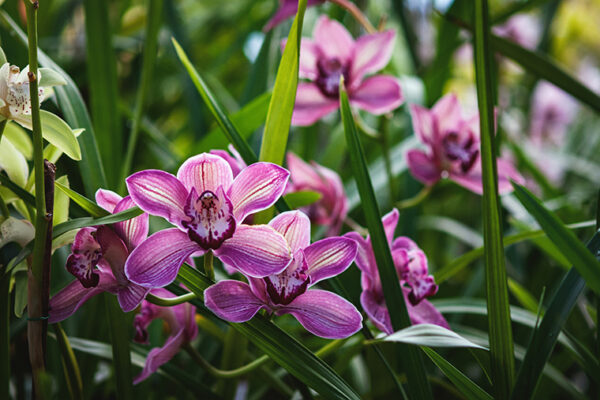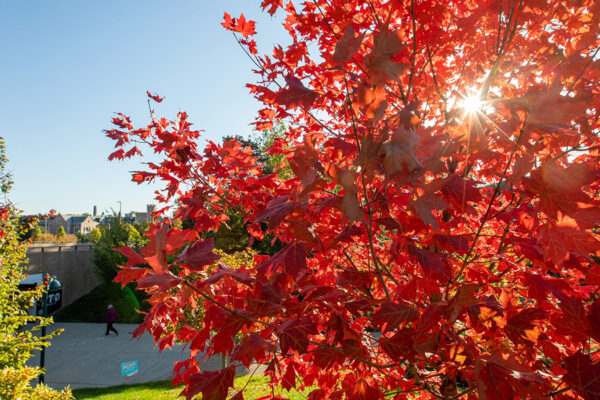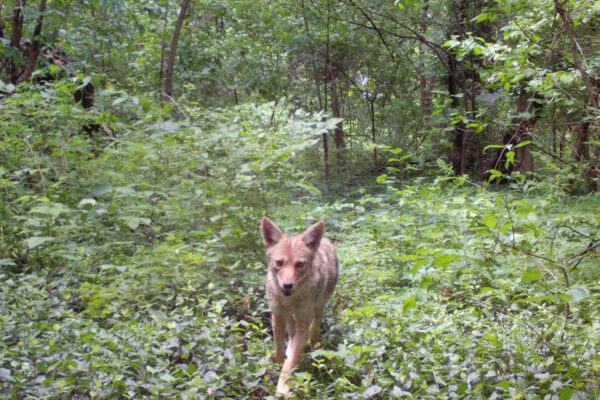Hazelnuts have long been prized as a tasty and nutritious food. Found in forests statewide in Missouri, they are a favorite wild edible for many people. Squirrels and other small mammals feast on the nuts each fall and winter, as do certain birds and white-tailed deer.
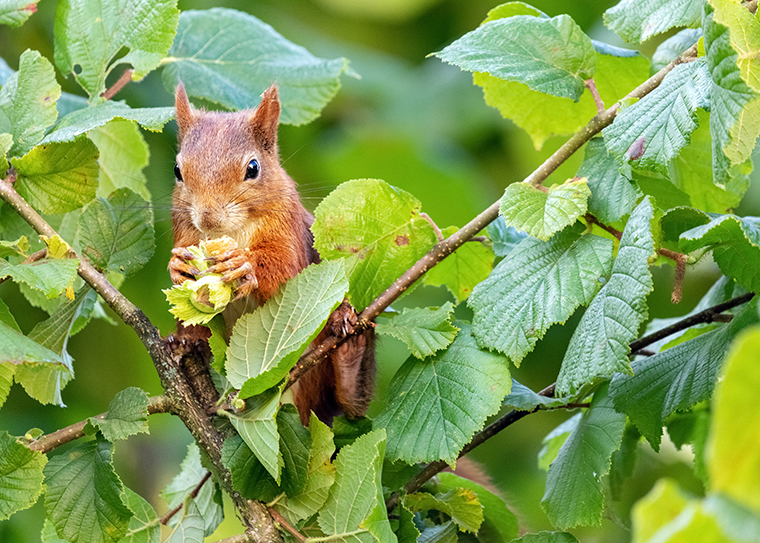
American hazelnuts have both male and female flowers — that in itself is not unusual. But female hazelnut flowers have some quirks. They cut a striking figure in the leafless forest when they start to bloom in late February. Clustered at the ends of short, woody branches, the spiky stigmas of female hazelnut flowers look like outstretched red fingers or tiny red fireworks.
Those red-hot pokers always struck biologist Susanne Renner as strange because hazelnuts don’t need to attract pollinators to reproduce.
Hazelnuts rely on the wind to loft pollen grains from male flowers, known as catkins, to eventually attach onto female stigmas. No bees are required to make this match. So, why would wind-pollinated plants invest energy into producing flower parts with a costly red pigment?
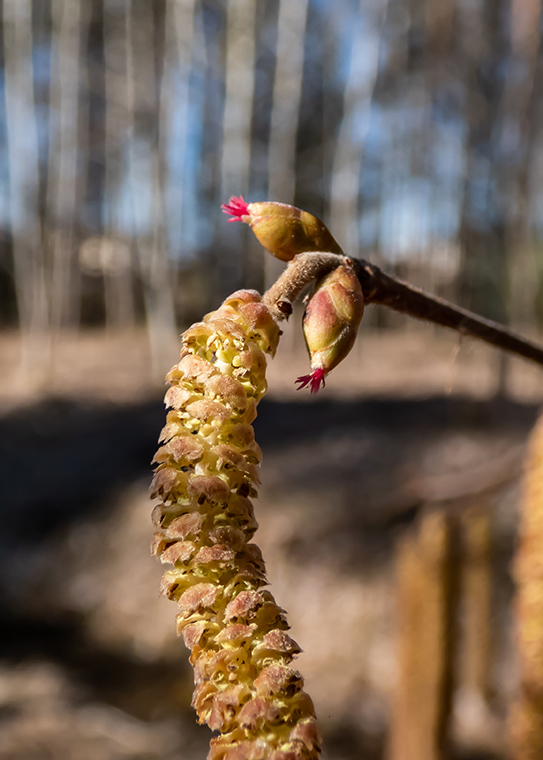
“Many wind-pollinated trees have red stigmas, but up until now we didn’t know why,” said Renner, an honorary professor of biology in Arts & Sciences at Washington University in St. Louis and co-author of a new study in Molecular Biology and Evolution.
Renner and collaborators from Bejing Normal University studied the stigmas of flowers in a plant in the walnut family, Juglans. Some species in this genus make red stigmas while others make greenish stigmas. The two forms can cross-pollinate in the wild, and this has resulted in a natural hybrid zone near Bejing in which some trees have red stigmas and others green stigmas.
The scientists discovered that the red stigmas in wind-pollinated trees accumulate anthocyanin, the same compounds that are revealed in autumn leaves after green chlorophyll production slows down and eventually stops.
The anthocyanin supports pollen germination and growth by acting as an antioxidant, scavenging reactive oxygen species that might otherwise result in sun damage, the scientists found.
This adaptation may be especially important in the sun-exposed thin walls of the stigmas, Renner said.
“The red color protects some of the most exposed parts of the tree’s reproductive system,” Renner said. “This includes stigma papillae, style transmission cells and the pollen tubes. We think that this mechanism is probably most important in the wind-pollinated species that tend to have relatively large stigmas.”
